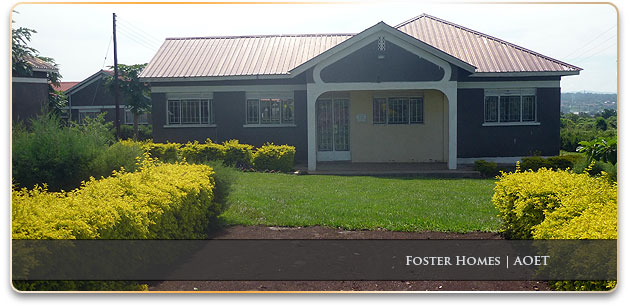AOET’s Mission / Fostering
To enhance care for orphans and vulnerable children through providing physical support and promoting access to comprehensive parenting training to permanent foster families and improved access to life skills training for both foster parents and children.
AOET permanent fostering homes program
AOET is setting up a model program that can be replicated at both organizational and family levels in any given culture. The strategy of this program is aimed at accelerating the integration of orphans and vulnerable children (OVC) into concerned and willing families.
The OVC integration into permanent foster families program is extremely important for the development and motivation of families to take responsibility for the care of orphans and vulnerable children. The program also helps to increase the family’s capacity for income generation and life planning.

However, the present circumstance is that AIDS has devastated a generation. The potential foster families, whether children’s extended family or compassionate families, are stressed by economic and housing pressures. These families do not have the capacity to take on further children.
The families are limited or have no viable resources for improving their living conditions and substantially boosting their household incomes.
This program’s core strength lies in it’s strengthening of existing family structures to address the issues of orphans and vulnerable children and development.
A number of individual training foster homes will create a supportive community. The housing is to consist of a common area for the family, an dining area, a bedroom for the parents, a bedroom for girls, a bedroom for boys and, where possible, a multipurpose room that can be used for accommodate children as needed, a home business or other needed uses.
The kitchen and storage unit may either be attached or detached from the main house. The housing accommodation is to be set in a way that provides privacy for the families.
The community will teach responsible practices encouraging the use clean fuel like paraffin, gas or electricity for cooking. Houses will be constructed with capacity to harvest water from the roofs which could be used both for household chores and the farming projects though municipal water or water wells will be utilized when possible.
These homes are already helping to place more orphans and vulnerable children and are facilitating life skills training for both the foster parents and children.
The housing and training is available to families for a four year period. A formal savings program during the four year commitment is expected to permit the family to build their own homes at the end of the term.
Vocational training is providing resources to help families increase household incomes substantially.
In the past, AOET has on average supported one child per family. The foster families in this housing program are supporting an average of three children per family.
In this design, the permanent foster parents take full responsibility and decision making over the fostered children. It is important to recognize that difficulties will be encountered but are in an environment where people are dependent on one another.
AOET supports the foster parents’ ability to exercise their responsibilities and decision making rights through parenting training and assists foster parents in creating constructive and healthy relationships.
At the same time, the approach of creating a training foster home community brings the family into an area where AOET is addressing concerns regarding childcare choices, responsible income planning, and setting goals for the future of the entire family.
